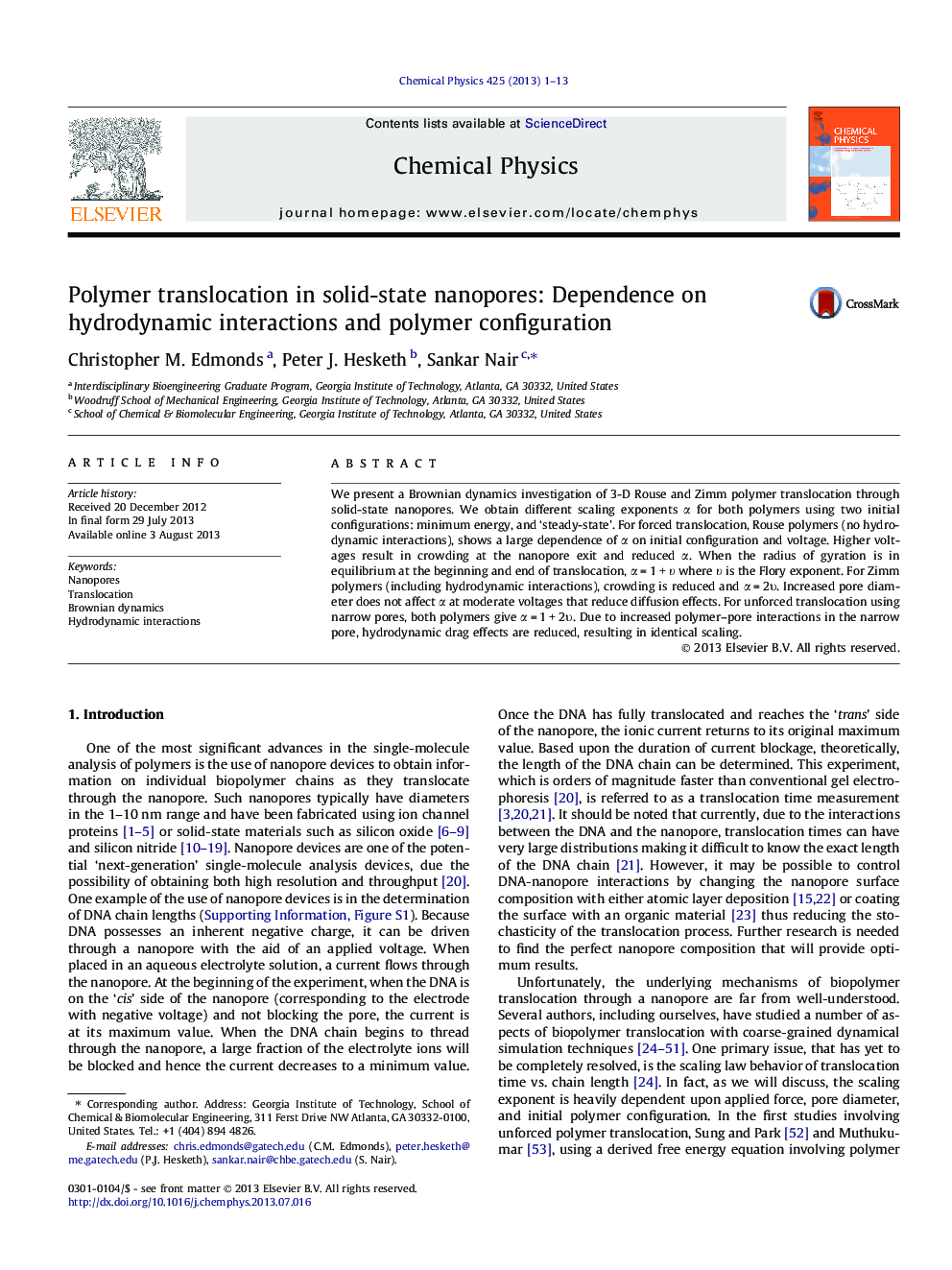| Article ID | Journal | Published Year | Pages | File Type |
|---|---|---|---|---|
| 5373766 | Chemical Physics | 2013 | 13 Pages |
â¢Polymer translocation in solid state nanopores was modeled by Brownian dynamics.â¢We used polymers that omit (Rouse) and include (Zimm) hydrodynamic interactions.â¢Hydrodynamic interactions are required to better explain experimental results.â¢Rouse theoretical scaling is obtained only when Rg â¼Â NÏ throughout the process.â¢Initial polymer configuration and polymer-pore interactions are important.
We present a Brownian dynamics investigation of 3-D Rouse and Zimm polymer translocation through solid-state nanopores. We obtain different scaling exponents α for both polymers using two initial configurations: minimum energy, and 'steady-state'. For forced translocation, Rouse polymers (no hydrodynamic interactions), shows a large dependence of α on initial configuration and voltage. Higher voltages result in crowding at the nanopore exit and reduced α. When the radius of gyration is in equilibrium at the beginning and end of translocation, α = 1 +Â Ï where Ï is the Flory exponent. For Zimm polymers (including hydrodynamic interactions), crowding is reduced and α = 2Ï . Increased pore diameter does not affect α at moderate voltages that reduce diffusion effects. For unforced translocation using narrow pores, both polymers give α = 1 + 2Ï . Due to increased polymer-pore interactions in the narrow pore, hydrodynamic drag effects are reduced, resulting in identical scaling.
Graphical abstractDownload full-size image
